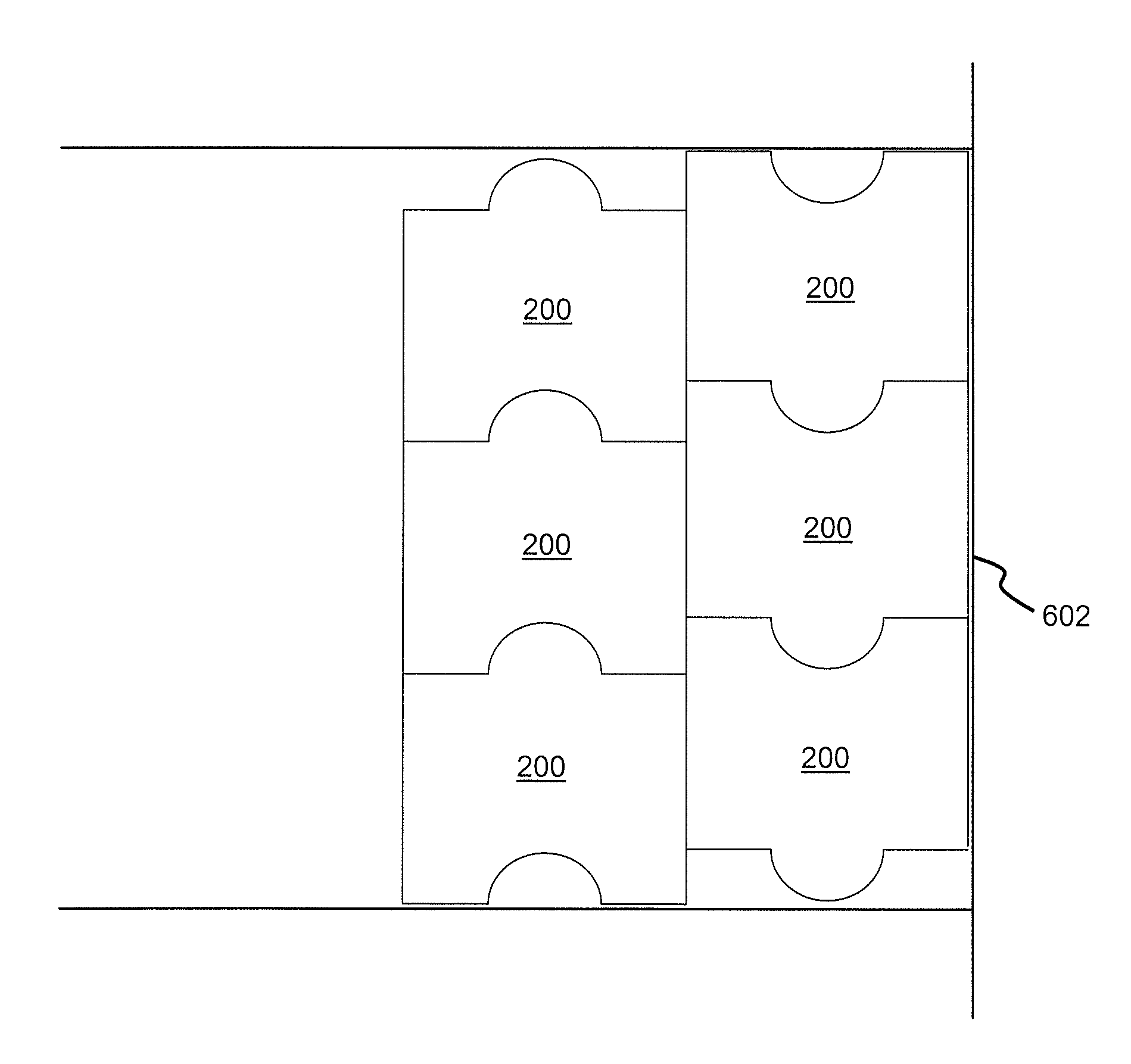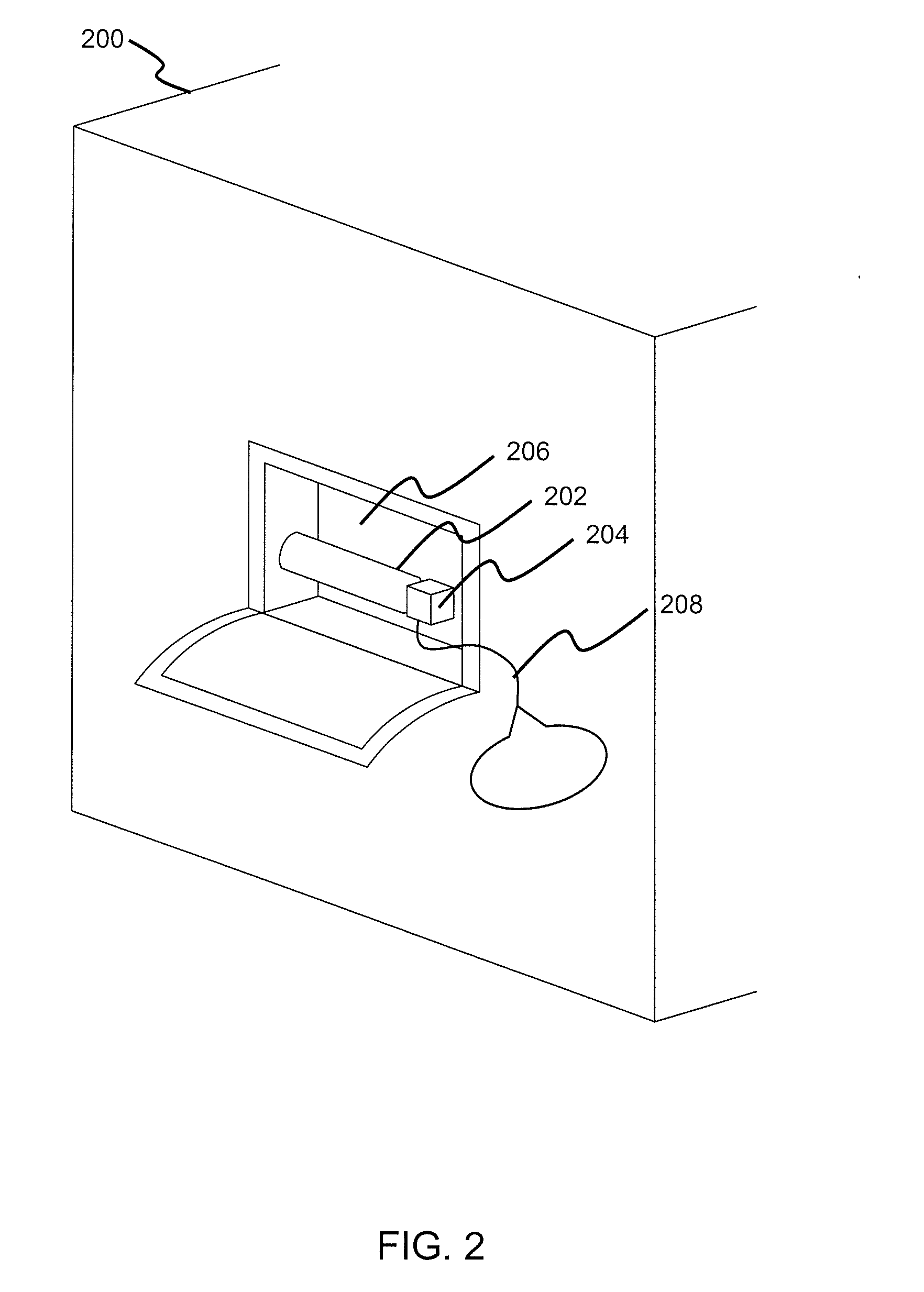System and method for mitigating and directing an explosion aboard an aircraft
a technology which is applied in the field of system and method for mitigating and directing an explosion aboard an aircraft, can solve the problems of affecting the stability of the stack, the disruption of the bojinka plot, and the use of explosive devices with extremely small amounts, so as to reduce the risk of explosion, and eliminate shrapnel or fragments
- Summary
- Abstract
- Description
- Claims
- Application Information
AI Technical Summary
Benefits of technology
Problems solved by technology
Method used
Image
Examples
Embodiment Construction
[0039]FIG. 1 shows a Boeing 737 service door 102 where the LRBL is to be built. The LRBL structure 104 is constructed to extend beyond the edges of the door. Proper assembly of the LRBL will be such that the IED will be located below the observation window 106. This is structurally the weakest part of the door. The inflatable slide / rescue raft which is attached to the door should be removed from the sheath in which it is contained. The referenced 737 was chosen as a demonstration as it is one of the most common aircraft types in U.S. aviation. However, the location and dimensions will vary depending manufacturer and model number.
[0040]FIG. 2 shows a perspective view of a ballistic cube 200 with its inflation system exposed. The gas cylinder 202 and the inflation mechanism 204 are located inside a protected pocket 206 on the side of the cube. The inflation mechanism 204 is activated by pulling a rip cord 208. The inflation system used for inflating the ballistic cube 200 is similar t...
PUM
| Property | Measurement | Unit |
|---|---|---|
| flexible | aaaaa | aaaaa |
| area | aaaaa | aaaaa |
| temperature | aaaaa | aaaaa |
Abstract
Description
Claims
Application Information
 Login to View More
Login to View More - R&D
- Intellectual Property
- Life Sciences
- Materials
- Tech Scout
- Unparalleled Data Quality
- Higher Quality Content
- 60% Fewer Hallucinations
Browse by: Latest US Patents, China's latest patents, Technical Efficacy Thesaurus, Application Domain, Technology Topic, Popular Technical Reports.
© 2025 PatSnap. All rights reserved.Legal|Privacy policy|Modern Slavery Act Transparency Statement|Sitemap|About US| Contact US: help@patsnap.com



